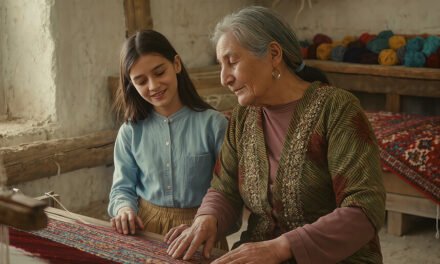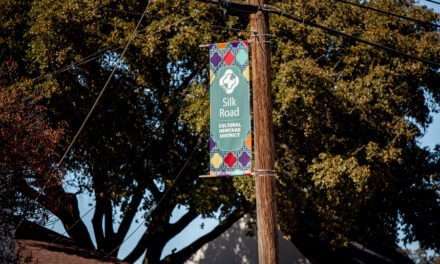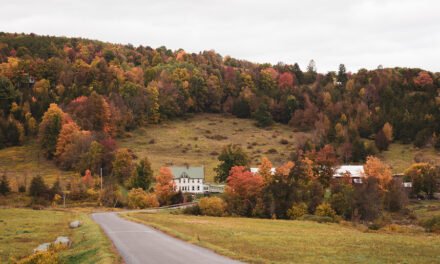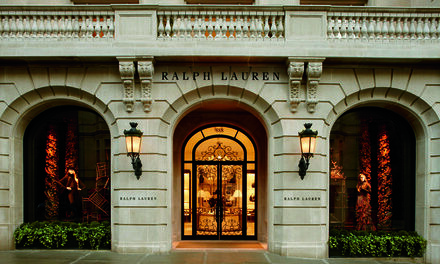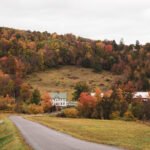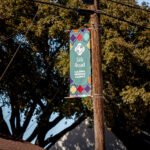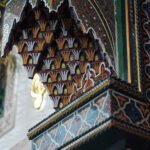A cultural phenomenon has blossomed in recent decades along a busy stretch of Wurzbach Road in San Antonio, Texas. Stepping into the Silk Road Cultural Heritage District feels like turning the pages of a global atlas. Instead of typical American suburban sprawl, a vibrant international mosaic unfolds—a microcosm of global diversity, a singular cultural drop that contains an ocean of colors, tastes, sounds, and moods.
Immigrant communities from North Africa, the Middle East, and Central and East Asia have established cultural enclaves in the district, its namesake evoking the ancient trade routes that once connected East and West. A dozen or more distinct cultural and ethnic communities reside and do business here, reflecting Texas’ broader patterns of immigration and cultural exchange.
The smoky scent of grilled kebabs intoxicates, and soon you’re lured by the sweet fragrance of freshly baked baklava and the rich spices of Indian curries. English predominates, but it’s paired with the brightly colored signage of family-owned businesses, run by Arabic, Chinese, Hindi, and other nationalities. A medley of languages strikes the ear: English, Spanish, Arabic, Vietnamese, and Tagalog. As dusk falls, live music from local bands can be heard.
Origins and Development

The Wurzbach corridor’s transformation dates to the 1980s and 1990s, when immigrant communities set up shop and started creating cultural institutions. Gradually, these communities became ingrained in San Antonio culture. That culminated in late 2024 when the area was officially approved as a cultural heritage district. The dedication ceremony included an Arabic band, performances by the Folkoholic Dance Theater, and plenty of food: manoushe, Persian treats (kaak, badam sookheth, and loz), and Filipino desserts (halo-halo, biko, and Bibingkang Pinipig).
The district spans about a mile along Wurzbach Road, mostly concentrated between Interstate 10 and Fredericksburg Road, with some extensions into neighboring streets. What initially made the stretch so attractive to immigrant entrepreneurs? Two factors: affordable commercial real estate and the district’s central location.
“If you look at the ancient road, you have everything from Far East Asia to Northern Africa to the Middle East,” San Antonio city councilman Manny Pelaez told the San Antonio Report. Pelaez is a key player in the district’s creation. “And if you look at all the businesses that are celebrated along this street, and the people who congregate here, it’s the exact same crowd. We’ve got Afghans. Syrians. Lebanese. Saudis. Jews. We’ve got a lot of Chinese families.”
San Antonio has never been a stranger to championing its multicultural identity, precisely because the city sees its immigrant citizens as vital, acting as the pulse of commerce and identity.
“We all come here as immigrants,” said San Antonio Mayor Ron Nirenberg during a 2024 City Council meeting. “We all unite under the banner of pursuing a more perfect state of democracy and human rights. That’s what makes this country great.”
Middle Eastern Presence
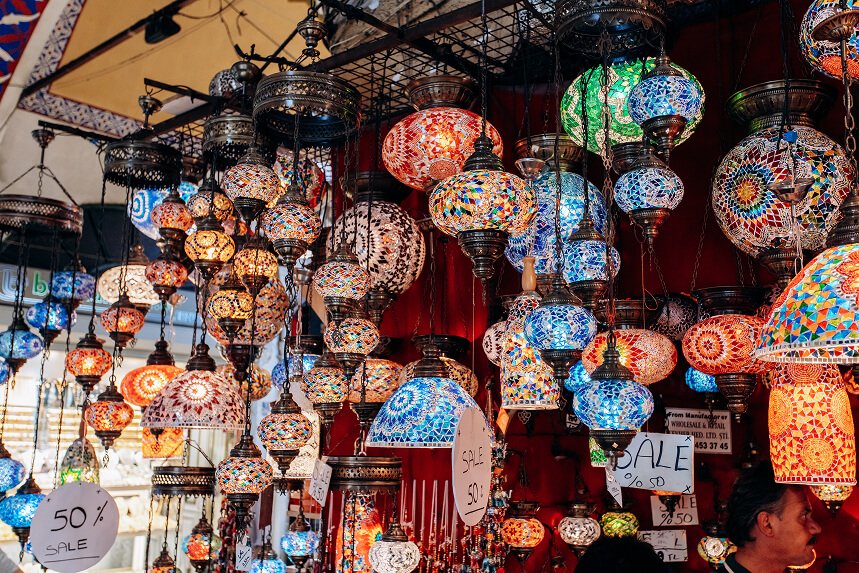
Middle Eastern communities have been a primary driver of the district. Lebanese Americans, with their long history in Texas dating back to the late 19th century, were pioneers in the area’s development. The first Lebanese family of descent that settled in San Antonio was the Badi Brothers, who arrived in 1905. Other Lebanese families followed, including the Saba, Waleed, and Ayish families. These families played a significant role in establishing the Lebanese community in San Antonio and contributing to the cultural diversity of the city, particularly in the area known as Little Lebanon. They have brought traditional Lebanese culture, cuisine, and festivities to the district, helping to create a vibrant and diverse community. The Lebanese community has also played a role in preserving and promoting the historical significance of the area, including landmarks and buildings that reflect their heritage. Additionally, members of the Lebanese community have been active in local businesses, helping to boost the economy and create a unique cultural experience for residents and visitors alike.
One of the most famous Lebanese activities that happens in the San Antonio Silk Road is the Lebanese Food and Cultural Festival. This event celebrates Lebanese culture through music, dance, crafts, and most importantly, food. Attendees can enjoy traditional Lebanese dishes such as shawarma, tabbouleh, hummus, and baklava while also learning about the history and customs of Lebanon. The festival typically features live performances, cooking demonstrations, and other cultural activities that showcase the rich heritage of Lebanon.
After the Lebanese established a presence in the area, Syrian, Iraqi, and Palestinian communities followed, along with their restaurants, bakeries, and specialty grocery stores.
A prime example is Ali Baba International Food Market, one of the district’s anchor businesses. Its shelves are brimming with Middle Eastern and Mediterranean ingredients. The grocer has a Halal butcher and makes its pita bread on site. Are you looking for Aleppo peppers, za’atar, baharat, or saffron? Ali Baba has it all.
Beyond grocers, cultural goods shops supply religious items, traditional clothing, music, and literature that help communities maintain connections to their heritage. The Silk Road Gallery carries silvery jewelry, ornate Turkish lamps, handmade Persian Termeh tables, and other Middle Eastern treasures.
Dining Delights and Community Hubs
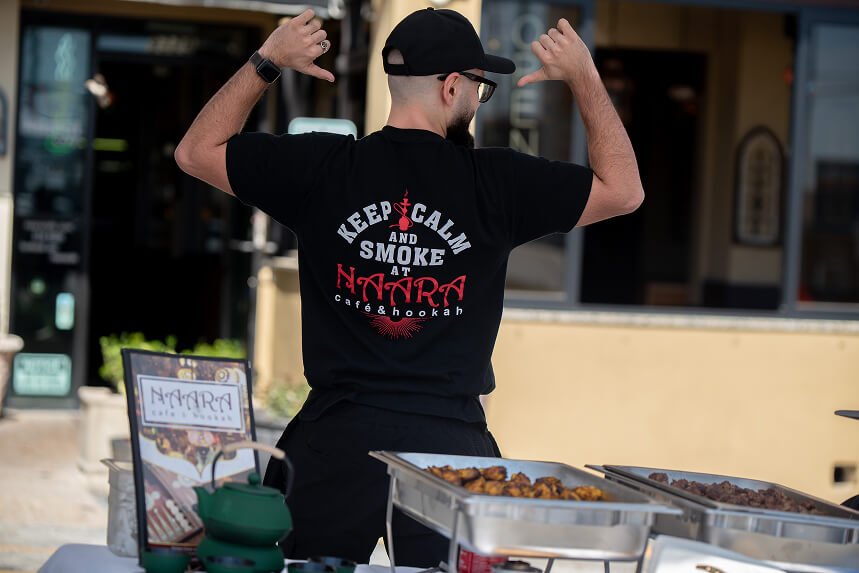
There are many highly acclaimed restaurants in the city that offer exceptional dining experiences. Some popular dining options in San Antonio include:
- Cured – a restaurant known for its creative takes on cured meats and farm-to-table cuisine.
- Battalion – an upscale Italian restaurant located in a historic firehouse.
- Signature – a fine dining restaurant offering a modern twist on classic American dishes.
- Il Forno – a cozy Italian trattoria serving house-made pastas and wood-fired pizzas.
- Kimura – a popular spot for Japanese ramen and small plates.
Some Middle Eastern restaurants in the area are highly recommended: Pasha Mediterranean Grill, Souk Mediterranean Bistro & Bar, and Zorbas Greek Mediterranean Cuisine.
The Naara Cafe and Hookah Lounge is a casual hangout for locals, with board games at the ready: backgammon, chess, and dominoes. The lounge features imported Middle Eastern tobacco—150 flavors in all.
While these restaurants may not have Michelin stars, they are still beloved by locals and visitors alike for their exceptional food and service.
Many businesses like Naara Cafe serve dual purposes—they meet the needs of immigrant communities, but they also introduce new cultures to outsiders. This crossover appeal has soared as consumer preferences have evolved in recent decades. Financially, it’s a boon to the businesses.
Asian and African Communities
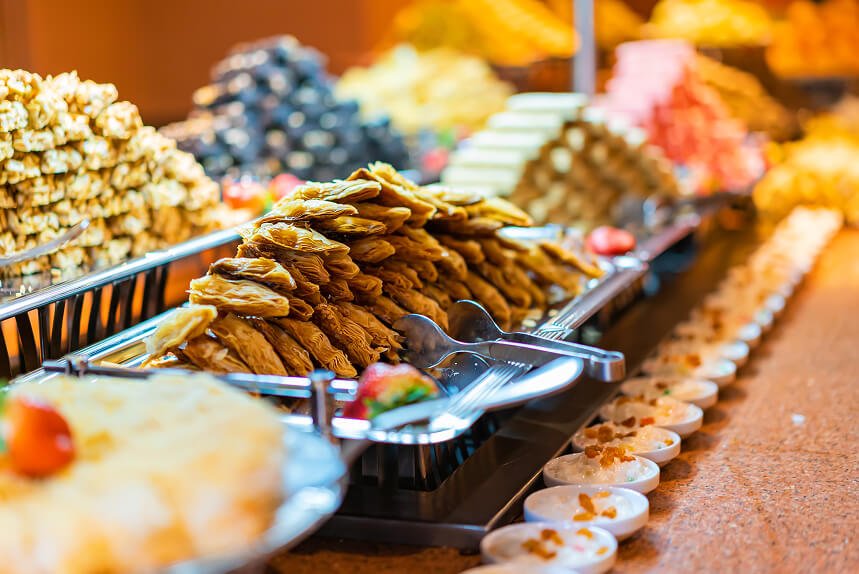
South Asian communities also dominate the district, including those with roots in India, Pakistan, Bangladesh, and Nepal. Restaurants catering to regional Indian cuisines, along with sari shops and grocery stores carrying specialized ingredients, have become important fixtures.
Beyond those major groups, Central Asian communities from countries like Uzbekistan, Kazakhstan, and Tajikistan—regions along the historical Silk Road—have a smaller representation in the district. But those groups are gradually increasing, only augmenting the area’s reputation for authenticity.
North African communities, particularly those from Egypt, Morocco, and Ethiopia, make up another presence. Looking for superb Ethiopian cuisine? You’ll find such dishes as injera, spicy stews, and vegetarian platters at African Village Ethiopian Restaurant. Nearby is the recently opened Amen Cafe Eritrean & Ethiopian Restaurant.
Looking Forward

San Antonio’s newly designated Silk Road Cultural Heritage District stands as a magnificent testament to the enduring vibrancy of America’s immigrant experience. It’s a living, breathing validation of how disparate communities, hailing from distant lands and diverse traditions, can not only coexist but truly flourish and find profound common ground. Far more than a mere commercial thoroughfare, this district unfolds as a dynamic, living museum of global cultures, an open-air exhibition of humanity’s rich tapestry.
And now, discerning urban planners and civic leaders across the nation are beginning to recognize the District as an exemplary model. It brilliantly illustrates how contemporary urban areas can not only embrace diversity but harness it as an undeniable strength, transforming cultural richness into an engine of communal vitality and economic prosperity. One can only hope that more cities will observe and eagerly follow San Antonio’s enlightened example, fostering their own vibrant cultural enclaves that celebrate heritage, build bridges, and enrich the urban experience for all.

